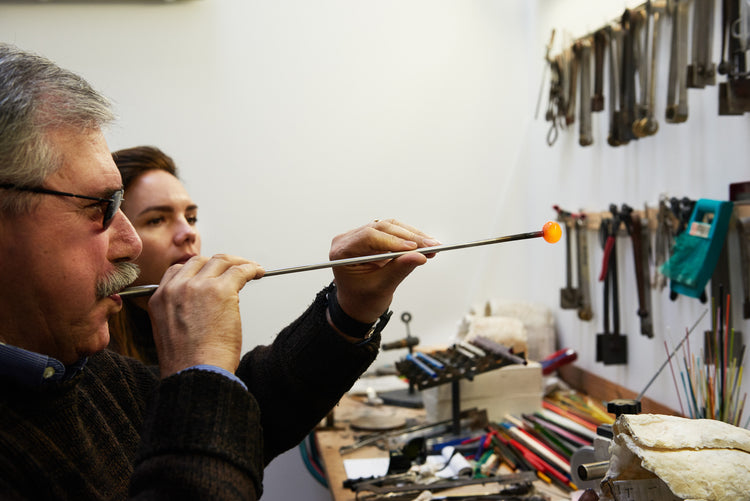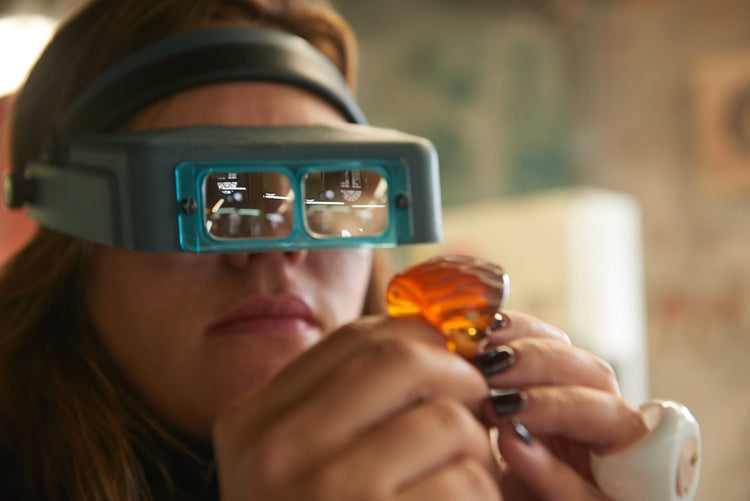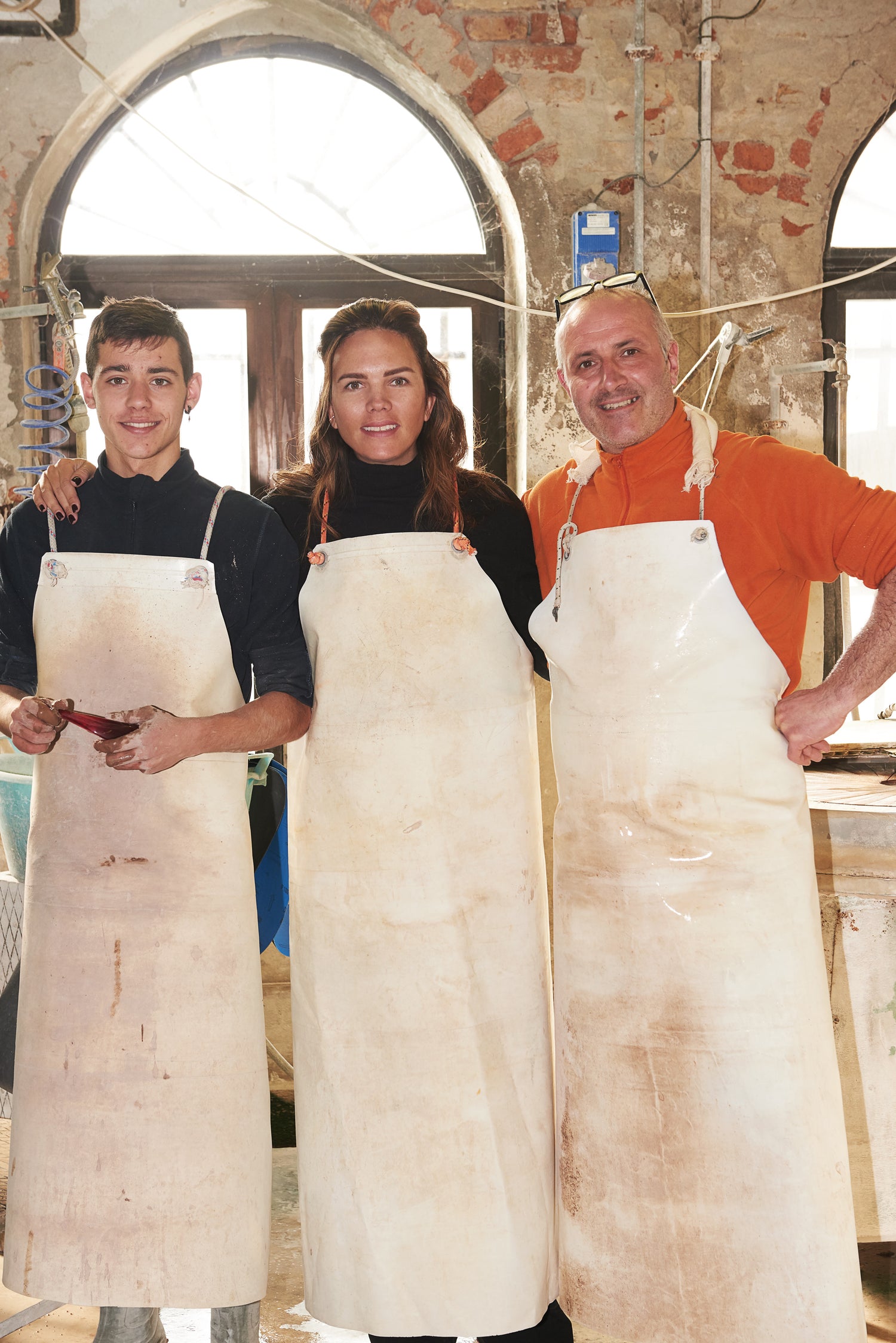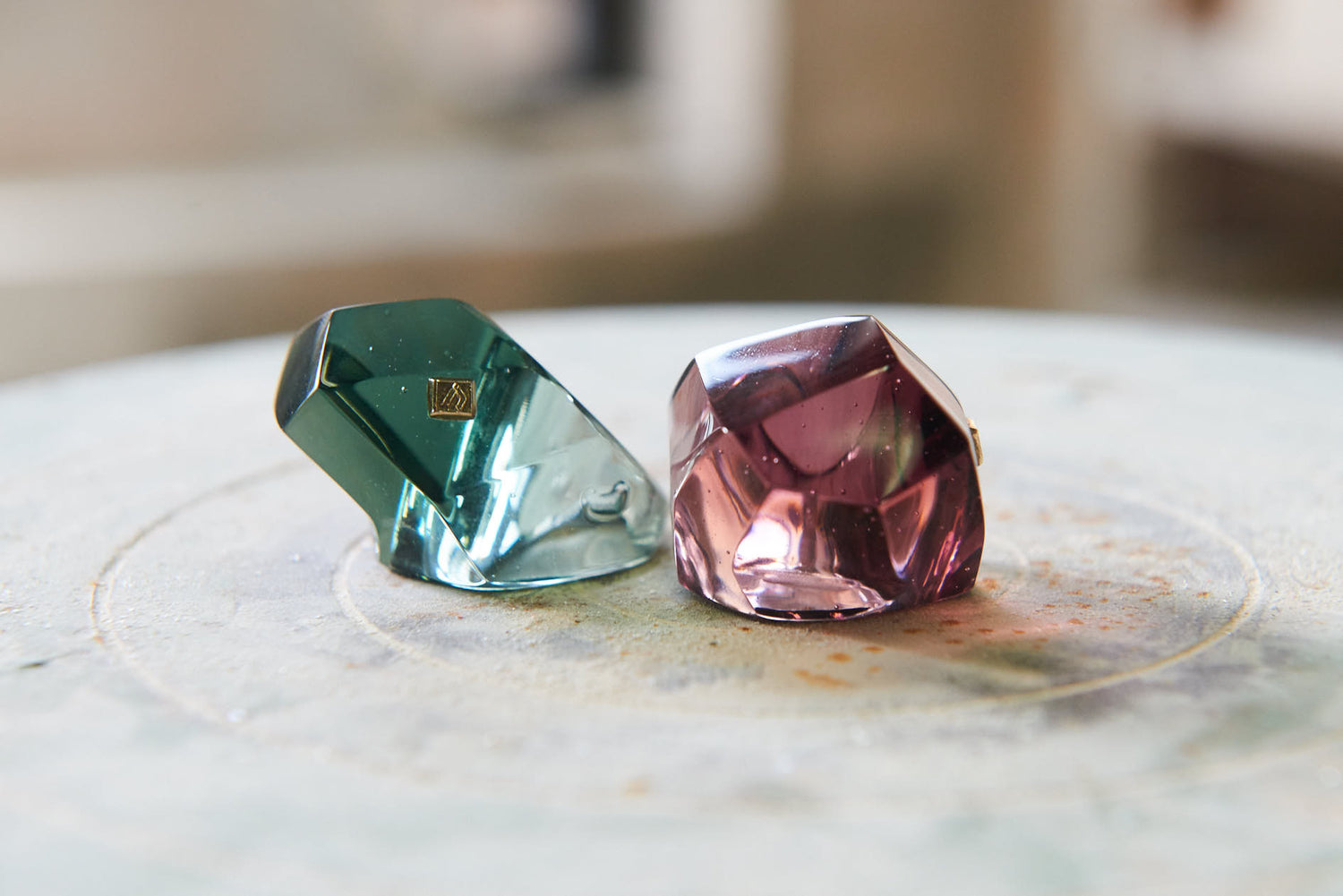Craftmanship
Crystal is a glass that possesses characteristics of gloss, transparency, elasticity; that’s where its name comes from: the Greek word, 'krystallos', in fact means 'ice'. A colorless glass of extreme purity, like rock crystal, was first obtained by Venetian glass masters in 1450 through the combination of quartz powder extracted from grinded pebbles of the Ticino river, with the ashes of marsh and marine plants of the Mediterranean basin, containing sodium carbonate and potassium.
A decree of the Venetian Republic in 1455 granted this artesan the exclusive production of this very transparent glass, produced using the technique he developed. At around 3,000 degrees, this sand mixture melts and becomes glass. Like candy, it can be squeezed, pulled or shaped. It's a craft they've been perfecting on the Italian island of Murano for generations.
Glass is a chemical compound, so from the point of view of the material itself, there is nothing special about Murano glass. What is special is still the ability of the craftsmen. The art form is on display at the nearby fornaco, or furnace, of the great glassmaker. The glass speaks in how it moves and hardens.






